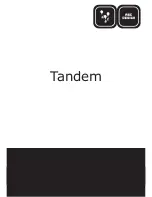
1
dc1831af
DEMO MANUAL DC1831A
DESCRIPTION
LT3763
High Power Constant Current,
Constant Voltage Synchronous
Buck Controller
Demonstration circuit 1831A is a high power constant
current, constant voltage synchronous buck controller
featuring the LT
®
3763. The input of the demo board is
up to 60V. The output is optimized for 10V, 10A as a
LED driver. As an LED driver, the output current is being
regulated until the output voltage reaches a programmed
voltage limit. The voltage limit on the demo board is set to
around 15V by R11 and R14. The load to be used with this
demo board is high current LEDs or laser diodes. Smaller
LEDs may not be able to handle the high current, even for
a short period of time. It is necessary to mount the LED
load on a proper heat sink. A fan may become necessary
to avoid exceeding LED’s maximum temperature rating.
The input voltage range of the LT3763 itself is 6V to 60V.
The demo board input range is 12V to 60V, therefore, the
demo board utilizes 80V MOSFETs. If an application has
a maximum input voltage of 48V, 60V MOSFETs such as
BSC100N06LS3, can be used for better efficiency at lower
voltage range. The typical efficiency of the demo board is
95% from a 24V input to a 10V, 10A load. The lower the
input voltage, the higher the efficiency tends to be for a given
load. At an output power level of 100W, even a one percent
efficiency improvement is a big advantage in minimizing
temperature rise. If an efficiency measurement is needed
in an application, the output voltage must be measured
at the output capacitors instead of at the LED load. This
prevents cable loss from being counted as a loss of the
board. The LT3763 turns off unnecessary circuits during
PWM off period to minimize power losses. As a result,
efficiency in many PWM dimming applications is high.
In most applications, input voltage reaching the maximum
specification is a transient event. However, a fan helps the
circuit to stay cool if running at or near peak input voltage
at full load in steady state. If running in steady state at
or near maximum input voltage and full load is required,
please contact LTC applications engineering.
L
, LT, LTC, LTM, Linear Technology and the Linear logo are registered trademarks of Linear
Technology Corporation. All other trademarks are the property of their respective owners.
The demo circuit 1831A achieves fast current rise time
from 0A to 10A. To see the real rise time, connecting wires
between the LED and the board should be as short as
possible to minimize the wire inductance and resistance.
The cathode of the LED should return to LED– with R17
populated with a resistor in a few mΩ. It is recommended
to measure the voltage on R17 with a short 50Ω coax cable
directly into a BNC connector on the oscilloscope. The
current can be calculated from the measured voltage. A
current probe adds more delays to the rise time so using
a current probe is not recommended. If fast rise time is
not required, the cathode of the LED can be connected to
GND as shown in Figure 2.
The LT3763 data sheet gives a complete description of
the part, operation and application information. The data
sheet must be read in conjunction with this quick start
guide for demo circuit 1831A.
Design files for this circuit board are available at
http://www.linear.com/demo
V
IN
(V)
10
EFFICIENCY (%)
96
98
100
50
DN1831A F01
94
92
95
97
99
93
91
90
20
30
40
60
LED CURRENT = 5A
LED CURRENT = 10A
Figure 1. Demo Board Efficiency
























